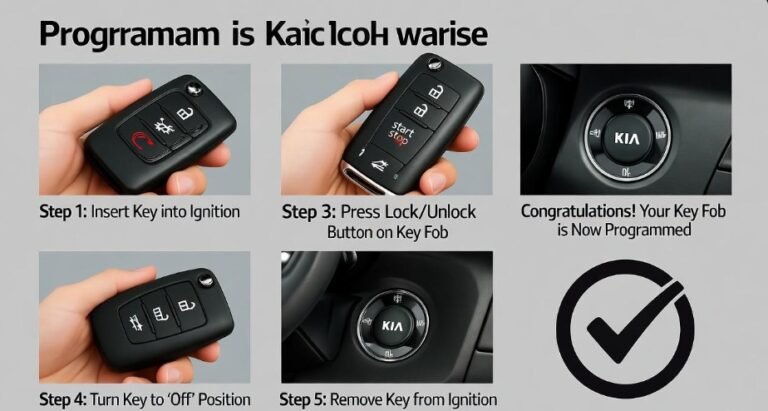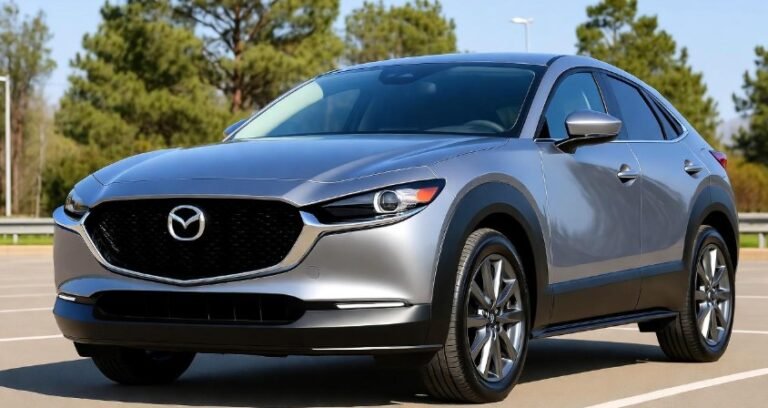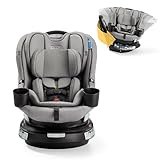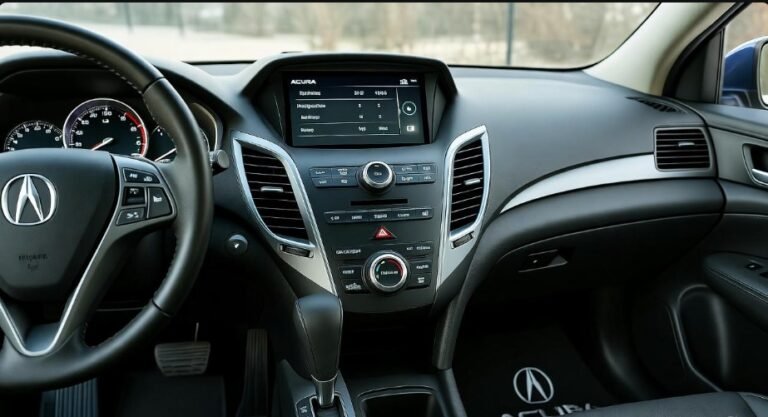Drum and Disc Brake Difference: Explained
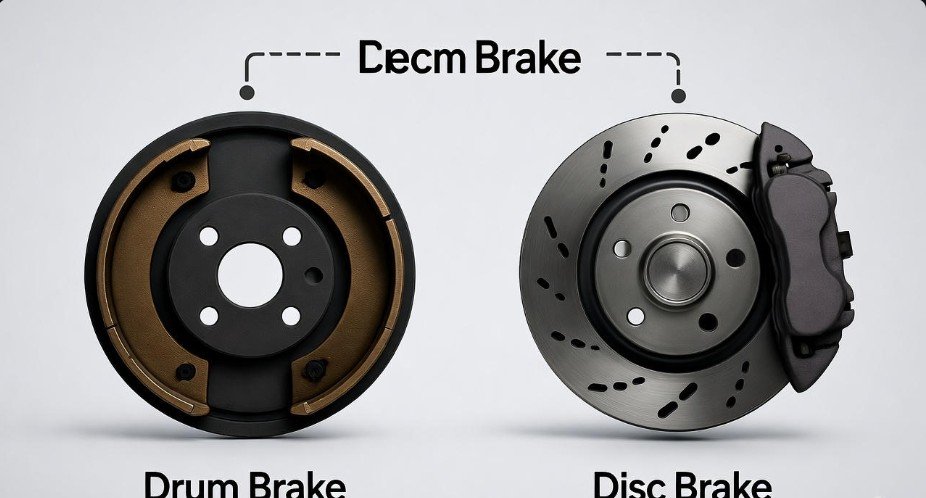
The drum and disc brake difference boils down to their fundamental mechanics: disc brakes use a caliper to squeeze pads onto a rotor, while drum brakes use shoes to push outward against the inside of a drum.
Key Takeaways
- Understand the core drum and disc brake difference.
- Identify disc brakes for superior performance and cooling.
- Recognize drum brakes in rear or parking brake systems.
- Learn how to inspect and maintain your car’s brakes.
- Appreciate the engineering behind safe stopping power.
When you press the brake pedal in your car, you’re engaging a sophisticated system designed to bring you to a safe stop. Two primary types of braking systems have been used in vehicles for decades: drum brakes and disc brakes. While both achieve the same goal – slowing your vehicle down – they do so in distinctly different ways. For many drivers, especially those new to car maintenance or navigating the U.S. automotive landscape, the drum and disc brake difference can be a bit confusing. Understanding these differences is crucial for appreciating your car’s engineering, knowing when maintenance is needed, and ensuring your safety on the road. Let’s demystify how these essential components work and what sets them apart.
What Are Drum Brakes? A Closer Look
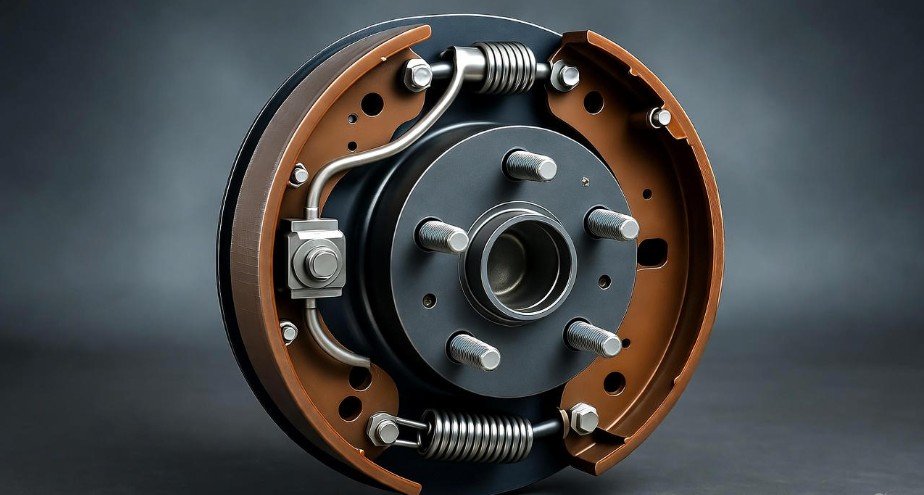
Drum brakes, one of the older braking technologies, are often found on the rear wheels of many vehicles or as the primary mechanism for parking brakes, even on cars with disc brakes up front. Imagine a large metal drum that spins with your wheel. Inside this drum, there are curved brake shoes. When you apply the brakes, hydraulic pressure forces these shoes outward, pressing them against the inner surface of the spinning drum. This friction between the shoes and the drum creates the resistance needed to slow down or stop the wheel.
The drum itself is typically made of cast iron and is shaped like a hollow cylinder. Attached to the vehicle’s chassis are the brake shoes, which are lined with friction material. A wheel cylinder, activated by brake fluid pressure, pushes the brake shoes outward. The force is then transmitted through the friction material to the drum, generating heat and slowing the rotation of the wheel.
Components of a Drum Brake System
- Brake Drum: A rotating metal cylinder that spins with the wheel.
- Brake Shoes: Curved metal components with friction linings that press outward.
- Wheel Cylinder: A hydraulic cylinder that pushes the brake shoes apart.
- Return Springs: Springs that pull the brake shoes back when the brake pedal is released.
- Parking Brake Mechanism: A lever or cable system to manually engage the brake shoes for parking.
While reliable and cost-effective to manufacture, drum brakes have some inherent limitations. Their enclosed design can trap heat and moisture, which can reduce braking effectiveness, especially after repeated hard braking (known as brake fade). They can also be more complex to service, requiring the removal of the drum to access the shoes and other internal components.
What Are Disc Brakes? Modern Stopping Power
Disc brakes represent a more modern and generally more effective braking technology. You’ll commonly find them on the front wheels of most vehicles and often on all four wheels of higher-performance cars. A disc brake system consists of a brake rotor (a flat, metal disc) that spins with the wheel, and a caliper that houses brake pads. When you apply the brakes, the caliper clamps down on the rotor, squeezing the brake pads against its surface. This action creates friction, slowing the wheel’s rotation.
The rotor, often made of cast iron or sometimes a more advanced compound like carbon-ceramic, is exposed to the air. This exposure allows for much better heat dissipation compared to drum brakes. The caliper, a C-shaped or multi-piston device, contains brake pads made of various friction materials. When hydraulic pressure is applied, pistons within the caliper push the pads onto the rotor.
Components of a Disc Brake System
- Brake Rotor: A rotating metal disc attached to the wheel hub.
- Brake Pads: Friction material housed within the caliper that clamps onto the rotor.
- Caliper: A housing that contains the brake pads and pistons, straddling the rotor.
- Pistons: Hydraulic cylinders within the caliper that push the brake pads against the rotor.
- Brake Bleeder Screw: Used to remove air from the hydraulic brake lines.
Disc brakes offer several advantages, including superior stopping power, better resistance to brake fade due to their open design and efficient heat dissipation, and generally easier maintenance. They are also less affected by water and debris because the rotor is more exposed.
The Drum and Disc Brake Difference: A Comparative Analysis
To truly grasp the drum and disc brake difference, let’s break down their performance, maintenance, and typical applications side-by-side. This comparison will highlight why many modern vehicles opt for disc brakes, especially in critical areas like the front wheels, which handle a significant portion of the vehicle’s stopping force.
When considering the drum and disc brake difference, it’s important to note that many vehicles utilize a combination. Typically, disc brakes are found on the front wheels due to their superior heat dissipation and stopping power, while drum brakes might be used on the rear or as part of the parking brake system. This setup balances cost-effectiveness with essential performance needs. For instance, it’s common to see solid or ventilated discs on the front and drum brakes on the rear of many sedans and SUVs.
According to the National Highway Traffic Safety Administration (NHTSA), brake system failure is a contributing factor in a small percentage of traffic crashes, underscoring the importance of well-maintained brakes, regardless of type. Understanding the drum and disc brake difference is the first step in ensuring your vehicle’s braking system is in top condition.
| Feature | Drum Brakes | Disc Brakes |
|---|---|---|
| Core Mechanism | Brake shoes press outward against the inside of a rotating drum. | Brake pads are squeezed inward onto a rotating rotor by a caliper. |
| Heat Dissipation | Poor; enclosed design traps heat. | Excellent; open design allows air circulation. |
| Stopping Power | Good under normal conditions, can fade with heat. | Excellent, less prone to fade, consistent performance. |
| Performance in Wet Conditions | Can be less effective due to water trapped inside. | Generally more effective; water is quickly shed from the rotor. |
| Maintenance Complexity | More complex to access and service internal components. | Simpler to access and replace pads and rotors. |
| Cost | Historically cheaper to manufacture. | Can be more expensive, especially high-performance options. |
| Common Application | Rear wheels, parking brakes on many vehicles. | Front wheels on most vehicles; often all four on performance cars. |
Understanding Brake Fade
One of the most significant aspects of the drum and disc brake difference relates to “brake fade.” This phenomenon occurs when brakes overheat, causing a temporary loss of braking power. When brakes are used repeatedly or intensely – imagine descending a long mountain road – the friction material and metal components get extremely hot. In drum brakes, this heat can cause the drum to expand and the friction material to become less effective, significantly reducing stopping ability. Disc brakes, with their superior ventilation, are much more resistant to this kind of performance degradation, making them safer for demanding driving conditions.
Maintenance and Inspection: What to Look For
Regular inspection of your braking system is vital. The drum and disc brake difference isn’t just about how they work; it’s also about how they wear and what maintenance they require. For disc brakes, wear is typically visible on the pads and rotors. You might hear a squealing or grinding noise, indicating worn pads. The rotor can become scored or develop a lip on the edge. For drum brakes, inspection requires removing the drum, where you’d check the thickness of the brake shoes and the condition of the drum’s inner surface.
A mechanic will typically check for:
- Brake Pad Thickness: Ensuring there’s sufficient material left for effective braking.
- Rotor Condition: Looking for grooves, cracks, or warping.
- Brake Fluid Level and Condition: Leaks or old fluid can degrade performance.
- Drum Interior: Checking for wear or damage on drum brakes.
- Parking Brake Functionality: Ensuring it holds the vehicle securely.
If you experience any changes in how your brakes feel – such as a softer pedal, increased stopping distance, or unusual noises – it’s time for a professional inspection. You can find resources on brake maintenance and safety standards from organizations like the U.S. Department of Transportation.
Why Are Disc Brakes More Common on the Front?
The primary reason disc brakes are almost universally found on the front wheels of vehicles is weight transfer. When a car brakes, inertia causes the vehicle’s weight to shift forward. This means the front wheels bear a significantly larger portion of the vehicle’s load during deceleration. Since the braking force is proportional to the load, the front brakes need to be more powerful and capable of handling more heat. Disc brakes, with their superior cooling and consistent performance, are ideally suited for this demanding role.
This weight transfer also explains why the drum and disc brake difference is often addressed by putting the better performers (discs) where they’re needed most. The rear brakes still play a crucial role in stability and overall stopping power, but they don’t have to contend with as much of the vehicle’s forward momentum. This is why rear drum brakes or less powerful rear disc brakes are common on many everyday vehicles.
The Role of Parking Brakes
While many modern cars use disc brakes on all four wheels, a separate system is typically employed for the parking brake. In vehicles with rear disc brakes, the parking brake often operates by a small drum brake mechanism built into the hub of the rear rotor, or by a mechanical system that applies the caliper’s brake pads. In cars that have rear drum brakes, the parking brake mechanism is integrated directly into the drum brake assembly. The parking brake’s design is focused on holding the vehicle stationary, not necessarily on hard braking during motion, which is why it can often be a simpler or older design like a drum brake.
Pro Tips: Keeping Your Brakes in Top Shape
Pro Tip: When replacing brake pads on disc brakes, consider replacing or resurfacing the rotors at the same time for optimal performance and to prevent premature wear of new pads.
Choosing the Right Brakes for Your Needs
For the average driver, the drum and disc brake difference mostly comes down to understanding how to maintain them and what to expect. If you’re buying a new or used car, the presence of disc brakes on all four wheels generally indicates a vehicle with a focus on performance and safety, often found in sportier models or luxury vehicles. For everyday commuting and general driving, the standard setup of front disc brakes and rear drum brakes is perfectly adequate and often more cost-effective to maintain.
When considering aftermarket upgrades, performance-oriented drivers might opt for larger, slotted rotors, multi-piston calipers, or high-performance brake pads for their disc brake systems, especially if they participate in track days or autocross events. The ability to upgrade and tailor disc brake systems further highlights their versatility and appeal in the performance automotive world, a sector where American engineering and innovation shine.
Frequently Asked Questions About Drum and Disc Brakes
Q1: Are drum brakes bad?
No, drum brakes are not inherently “bad.” They are a reliable and cost-effective braking technology that has served vehicles for decades. They are perfectly adequate for many applications, especially as parking brakes or on the rear of less performance-oriented vehicles where heat buildup is less of a concern.
Q2: Can I convert my drum brakes to disc brakes?
Yes, it is possible to convert drum brakes to disc brakes, particularly on the rear wheels. Aftermarket kits are available for many vehicles. However, this can be a complex and expensive modification, and it’s advisable to consult with a professional mechanic to ensure proper installation and compatibility.
Q3: How often should I inspect my brakes?
It’s recommended to have your brakes inspected at least once a year or every 12,000 miles, as part of routine vehicle maintenance. However, you should also have them checked immediately if you notice any changes in their performance, such as strange noises, a soft pedal, or longer stopping distances.
Q4: What causes brake fade?
Brake fade is caused by overheating of the braking components. When brakes are used repeatedly or intensely, they generate a lot of heat. This extreme heat can reduce the friction material’s effectiveness and cause the metal parts to expand, leading to a temporary loss of stopping power. Disc brakes are inherently better at dissipating heat than drum brakes.
Q5: Do all cars have the same type of brakes?
No, not all cars have the same type of brakes. The most common setup for modern cars is front disc brakes and rear drum brakes. Many performance vehicles and newer models often feature disc brakes on all four wheels. Parking brake systems can also vary significantly in design.
Q6: What does a “squealing” brake sound mean?
A squealing sound from your brakes often indicates that the brake pads are worn down and need replacement. Most brake pads have a small metal indicator that contacts the rotor when the pad material is low, producing a high-pitched squeal to alert the driver. It’s important to address this sound promptly.
Conclusion
Understanding the drum and disc brake difference is a fundamental aspect of automotive knowledge that empowers you as a vehicle owner. While drum brakes employ shoes pressing outward within a drum, disc brakes utilize pads squeezed onto a rotor by a caliper. Disc brakes generally offer superior performance, better heat dissipation, and easier maintenance, making them the preferred choice for front wheels and high-performance applications. Drum brakes remain a cost-effective and reliable solution for rear wheels and parking brake systems on many vehicles. By staying informed about how your car stops, recognizing the signs of wear, and performing regular maintenance, you ensure both your safety and the longevity of your vehicle’s braking system, a testament to the continuous innovation in automotive engineering.


